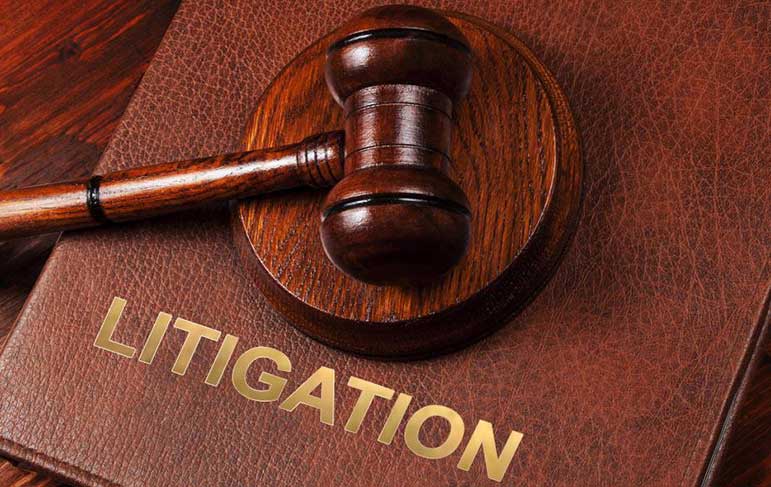ALL ABOUT LITIGATION

The term “litigation” certainly has a negative connotation to many people today. Litigation is often a lengthy, expensive process that can be a bit of a gamble. While it’s often better to settle your legal matter before it enters the litigation process, sometimes this simply is not possible.
When you have no choice but to litigate, you can make the process a little less intimidating by knowing beforehand what litigation is, how the process works, who is involved, and what you should do during the process.
Litigation Defined
Litigation is more than a lawsuit, and more than courtroom proceedings. It involves all the proceedings two opposing parties go through when trying to enforce or defend a legal right. You can begin litigation, or you could be pulled into it. It can eventually be settled out of court, but it may also be settled by a jury or judge.
If a matter is unsolvable without a lawsuit, it falls under the category of litigation. If you can solve the matter on your own, or if there is no conflict (i.e. estate planning, property sales, etc.), then you’re dealing with a transactional matter, and not a litigation matter.
There are several types of litigation: civil litigation, commercial litigation, patent litigation, securities litigation, and complex litigation.
- Civil litigation involves a dispute between parties over money damages. Civil litigation can also be an order requiring the performance of a specific act.
- Commercial litigation involves a dispute over specific business transactions.
- Patent litigation is a dispute that comes from a patent infringement.
- Securities litigation is a dispute over securities fraud. This litigation can have a criminal counterpart.
- Complex litigation includes complex legal and case management challenges. In complex litigation, there are complicated legal issues, extensive documentation, and several parties involved.
The litigation process progresses through the following series of steps.
Complaint
Once the parties involved in a legal dispute decide they cannot reach an agreement, one or both will secure litigation lawyers. One party will file a “Complaint” document with the court that identifies those involved, the facts of the dispute, lays out legal claims, and indicates specific damages. A “demand letter” will be sent to the other party that details what that person or organization has to do to avoid any further legal action.
At this point, the party that received the demand letter must respond within a certain amount of time. This party can file an answer, admitting or denying the statements made in the complaint, file an answer with counterclaims, or file a motion to dismiss if the party believes the lawsuit is not supported by the law.
At this point, the party who filed originally has an opportunity to respond.
Whether in aviation, sales and distribution, antitrust, corporate and M&A, finance, employment, energy, IP, litigation, TMT, real estate, or any other area of law, our clients can expect excellence and commitment to their objectives.
During this discovery phase of litigation, information is exchanged between the parties. A litigation lawyer will ask for facts, evidence, and documents related to the case from the other party. This is a formal process, and it involves very strict deadlines. If deadlines aren’t kept, certain parties involved may lose the right to use evidence and facts in trial. In addition to strict deadlines, discovery also involves many technical and complex (and even tedious) rules. It’s crucial to have a knowledgeable litigation lawyer who will aggressively pursue all necessary elements of this stage.
In discovery, formal interviewing of both parties and even witnesses (called deposing) also occurs. Depositions are conducted under oath and are transcribed.
Motion and Trial
Attorneys can petition the court to make decisions about certain portions of the case, such as more time for discovery.
The process of litigation up until this point will have been thorough, and quite possibly long with some litigation lawsuits taking years to resolve. Sometimes a lawsuit can be settled before getting to trial. This is more ideal than going to trial, as trials can be expensive and uncertain for both parties. If a lawsuit can’t be settled, however, trial is the next step in the litigation process. If the lawsuit is brought to trial, a judge or jury will make the ultimate decision on the case.
In a trial that is a civil lawsuit, the burden of proof rests on the party bringing the lawsuit. This party is responsible for convincing the judge and/or jury that they should win the lawsuit. This is done with sufficient evidence and witnesses to prove the case. Even though the burden of proof is on one party, however, both sides will present evidence in their favor.
The plaintiff presents first followed by the defendant who has the chance to respond to the allegations presented by the plaintiff. Both sides can respond to allegations until both sides have been fully presented and the case is rested. Both sides deliver closing arguments. If the trial is decided by a jury, the judge will instruct the jury on how the law should be applied in the specific case. After deliberation, the jury will deliver the verdict. If there is no jury, the judge will deliver a verdict. A trial may go on for several weeks.
Appeal
After the verdict is delivered, the losing party will still have the right to appeal the decision to a higher court. The higher court will review the case, looking at the briefs (or arguments) and evidence that was presented at the trial, with the intent to look for legal error. A higher court doesn’t override “findings of fact” made by a lower court.
The judge in the higher court may affirm the verdict if the proceedings are found to have no errors. If there was an error, however, the judge can reverse the previous verdict. At this point, a new trial will begin.
Post-Trial Litigation
Whether a party involved chooses to appeal or not, litigation is still not over once the verdict has been delivered. Motions, orders, and hearings will still be needed before the case can be closed.

